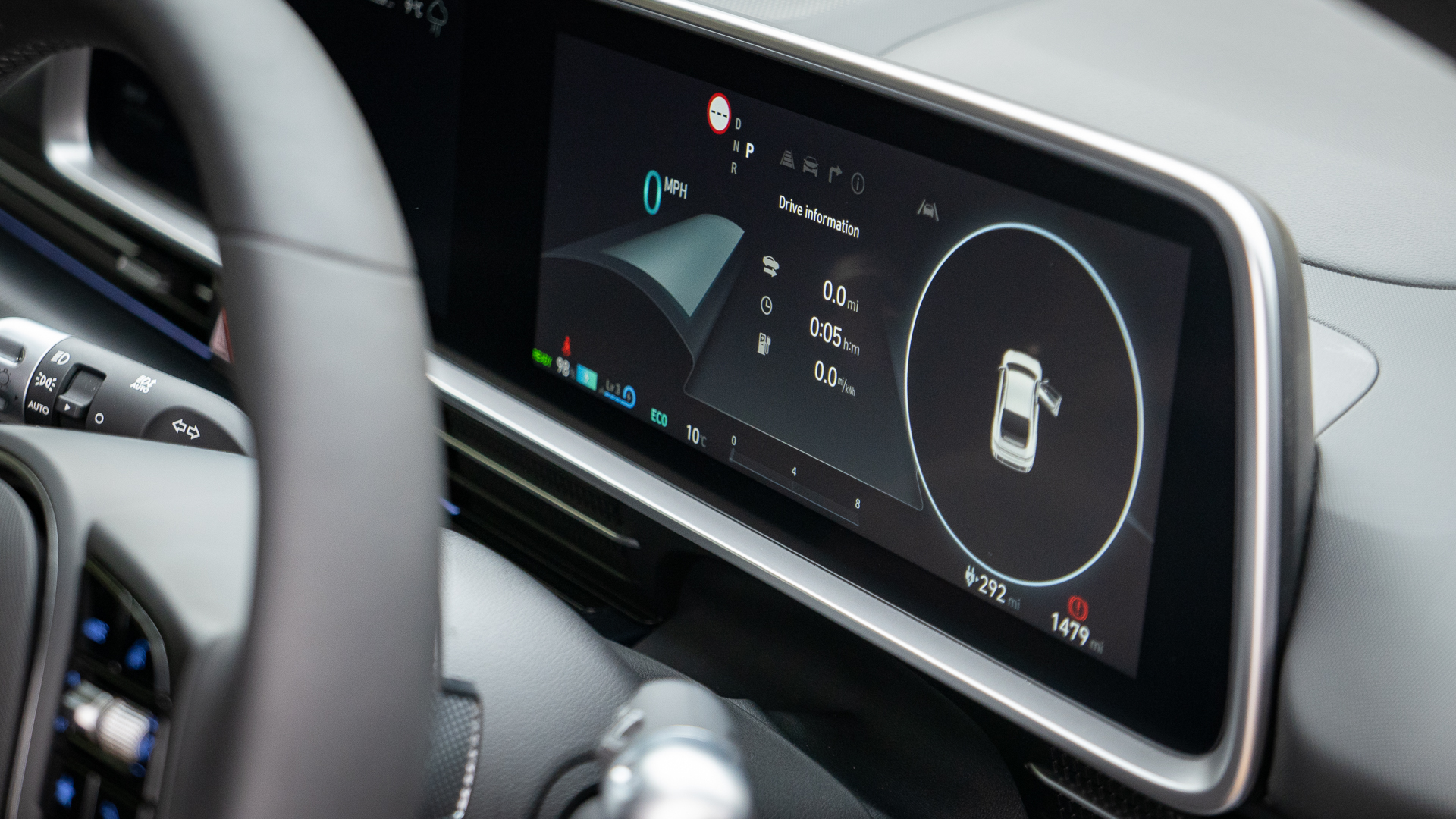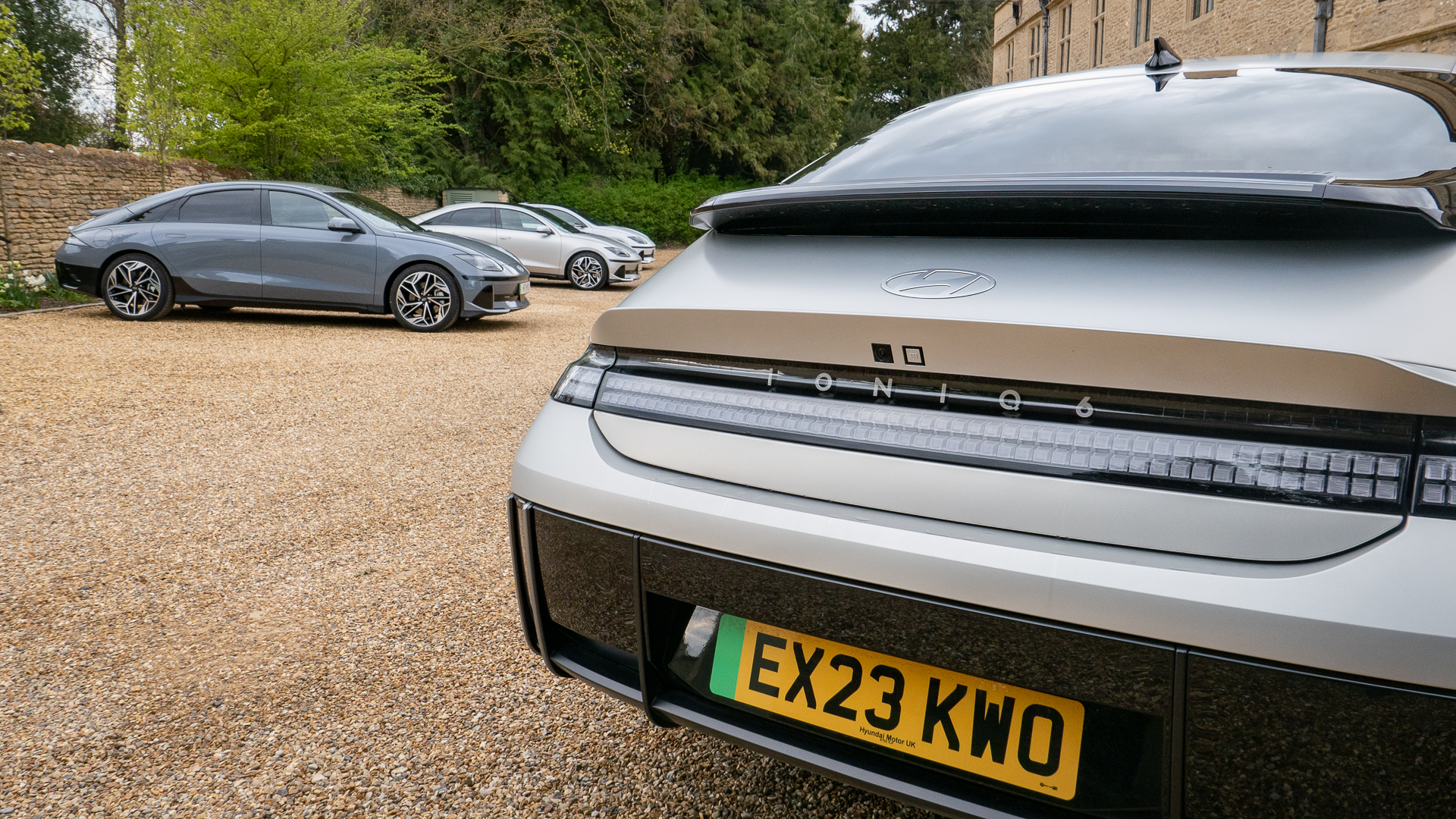Hyundai Ioniq 6 first drive: an electric streamliner with impressive range
The Ioniq 6 pairs distinctive design with familiar – and impressive – E-GMP electric platform


Hyundai wants us to think of its cars as chess pieces. Not because it plans to out-manoeuvre the competition and topple their kings, but because of how its cars are designed.
Instead of following the Russian doll school of automotive design, where a manufacturer’s lineup features cars of increasing size but which all look roughly the same, Hyundai is taking an entirely different approach.
This is where the chess piece analogy comes in, because while each member of the Hyundai Ioniq range uses the same E-GMP platform – including its motors, batteries and electrical architecture – the body of the car is totally different. Like how a pawn, knight and bishop all have the same base, but differ up top.
In Hyundai’s case this means the new Ioniq 6 you see here, priced from £46,000 to £55,000, looks completely different to the Ioniq 5. It could be argued they appear from different planets, let alone different companies. Where the Ioniq 5 plays a clever trick of being far larger than it looks – Golf-sized in photos, Range Rover Evoque-sized in reality – the Ioniq 6 is smaller in the metal than its elongated profile suggests.

The look is inspired by streamliner planes, trains and automobiles of the 1930s, where a burgeoning understanding of aerodynamics led vehicle designers to put some slipperiness into their sketches. It’s a design that aimed for higher speeds back then, but is more focused on greater range today. It also makes the Ioniq 6 look unlike anything else, especially at the rear, where hints of Porsche 911, early Beetle and Volkswagen's wacky XL1 hybrid converge. It isn’t the neatest of rears, but it sure is striking and, after following one in convoy for a day, I grew to like it.
The front also looks pretty smart, and there are pixel-style lighting details found inside and out – a design cue that Hyundai is using to visually separate its fully-electric cars from the rest of the range. The company has put some thought in here, to the extent that the steering wheel doesn’t have a badge; instead there are four illuminating pixels. These are used to show the car’s charge status when plugged in — and as Morse Code fans will know, four dots is the letter H.
Interior and tech

The rest of the interior also stands apart from the 6’s Ioniq 5 stablemate. Both cars have a pair of digital screens, with one acting as the driver display and the other being home to the infotainment system, with Apple CarPlay and Android Auto. Below the latter is a set of touch-sensitive buttons for the climate system, which look good but are tricky to press accurately until your brain has formed the muscle memory required. I’d rather have a set of buttons, knobs or dials to control basics like cabin temperature, steering wheel heating and fan speed.
Get all the latest news, reviews, deals and buying guides on gorgeous tech, home and active products from the T3 experts
Where the 6 differs is how the front seats are split by a full-size centre console, instead of the cantilevered one of the Ioniq 5. This houses loads of storage for coffee cups, bottles, phones, wallets and keys, and below it there’s a massive trough for putting anything else you might be carrying. It could easily swallow a family-sized supply of road trip snacks, or perhaps even a handbag. It’s just a really practical space, and I’m here for it.

The cabin is bathed in ambient mood lighting, as many cars are these days. I like how, instead of fitting lighting to the door panels directly, and no doubt at great expense, Hyundai has fitted a light strip behind a ledge that spans the full length of the door. The ledge acts as a door pull, but also hides the naked LEDs which then flood the upper half of the door in light. That panel has a subtle rippled effect, which further creates an interesting lighting pattern.
What doesn’t work quite so well are the displays used instead of wing mirrors. Or rather, the big, blank panel that sits awkwardly on the ends of the dashboard if you don’t stump up for the optional cameras. It’s a bit like the blank dashboard buttons of entry-level cars from the 90s, serving no purpose other than to remind the driver of the box they didn’t tick on the order form.
Given the futuristics looks of the 6, I can imagine most buyers speccing cameras for mirrors.
Driving and performance

Hyundai’s chess piece approach means the Ioniq 6 shares the same platform as the 5. Called E-GMP, this modular platform is also used by electric vehicles from Kia and Genesis, which are part of the same group. Battery size options are 58 and 77.4 kWh, and the 6 is available in single or dual motor configuration. The former has a 168 kW motor driving the rear, while the latter has 165 kW at the rear and a 74 kW motor up front.
For this article we drove the single-motor variation with the larger battery pack, which has the most stamina of all and a claimed range of up to 338 miles. As always, this is only an estimate and will depend on variables like driving style and ambient temperature.
Our test car predicted 284 miles of range from 99% charge, with this number falling predictably during about three hours of driving. As for efficiency, we had seen claims of just over five miles per kWh, but after a drive that mostly stuck to winding country roads the car indicated an average of 3.5 m/kWh. This number rose gradually throughout our drive, and would likely have got into the fours on a steadier journey with less speed fluctuation.

Hyundai is one of just a few manufacturers to build its cars with an 800-volt electric architecture, instead of the more common 400. This makes for faster charging speeds, and the Ioniq 6 can refill its battery at up to a massive 350 kW – that’s the fastest speed offered by any public charger available today, and means charging from 10 to 80% can take as little as 18 minutes.
As with other members of the E-GMP family, the Ioniq 6 rides very well indeed, dealing well with the lumps, bumps and cavernous potholes of British roads while retaining a calm quietness in the cabin. There’s a hint of whine from the rear-mounted motor under heavy acceleration, but when cruising this disappears almost entirely. I suspect the front motor from the all-wheel-drive model would be more apparent, but not detrimentally so.
The Ioniq 6 drives very nicely indeed, with plenty of acceleration for most drivers – 62 mph takes a claimed 7.4 seconds in this single-motor car – and three drive modes to pick from, using a button on the steering wheel. I spent most of my time in Eco, which softens the response of the accelerator but is still perfectly usable in everyday driving. Above this there’s Comfort, Sport (which adds weight to the steering and makes the accelerator far more sensitive), and Snow.

There’s a big difference between Eco and Sport, giving drivers the chance to conserve range or have fun, although I suspect most owners will stick to range-extending Eco mode most of the time.
There are four levels of regenerative braking, adjusted using paddles behind the steering wheel. Only in its strongest setting is one-pedal driving possible, where the car can be brought to a stop without using the physical brakes. You’ll need to press the pedal when stopping more quickly, in which case the brakes offer decent feel with no hint of when the system switches from regeneration to using the discs and pads.
I’d be interested to see what the quicker dual-motor Ioniq 6 drives like, especially given its 0-62 mph time being just 5.1 seconds. But, as fun as it may be, such acceleration feels at odds with the long-legged claims of this streamliner. I’d rather go for the less powerful, single-motor variant and enjoy the extra range on offer.
First-drive verdict
The Ioniq 6’s bold design might not be for everyone, but the streamliner look grew on me surprisingly quickly during my day of driving. It’s a shape that is somewhat colour-sensitive, but one that with the equally-distinctive Ioniq 5 shows real intent from Hyundai. Together with siblings Kia and Genesis this is a company poised to dominate the middle grounds of the EV market.
The 6 is great to drive, just like other members of the E-GMP family, with an interior that is as smart as it is practical – although that sloping roof limits headroom for tall rear passengers. I found Hyundai’s range claims to be optimistic, as they are from just about every manufacturer, but the car’s own claim of 280-odd miles from a full charge is still plenty. Pair this with ultra-fast 350 kW charging, and the Ioniq 6 has a lot going for it.
Alistair is a freelance automotive and technology journalist. He has bylines on esteemed sites such as the BBC, Forbes, TechRadar, and of best of all, T3, where he covers topics ranging from classic cars and men's lifestyle, to smart home technology, phones, electric cars, autonomy, Swiss watches, and much more besides. He is an experienced journalist, writing news, features, interviews and product reviews. If that didn't make him busy enough, he is also the co-host of the AutoChat podcast.
